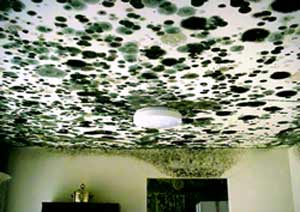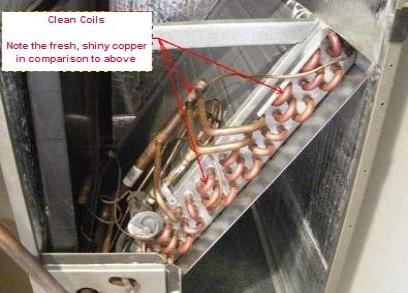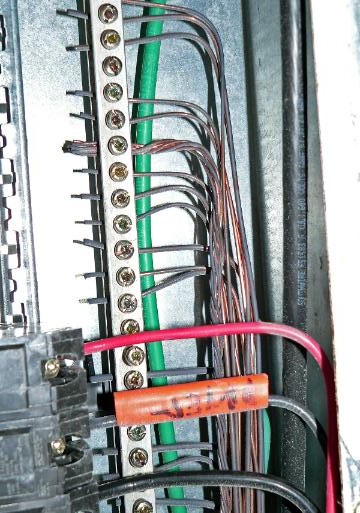ASK THE HOUSE WHISPERER
What is a “Standard Home Inspection?”
The term Standard Home Inspection is used by Alabama House Whisperer to describe and price services offered at the Services tab. A Standard Home Inspection occurs when the inspector arrives, gains access to the property and begins working. The price quoted at the Serives tab applies with respect to the above statement. If the inspector is required to turn on utilities, light pilot lights, de-winterize the home or any other services above and beyond actually performing the property inspection, charges may apply. Additionally, any special discounts or special pricing may result in the loss of some of the “perks” offered with a Standard Home Inspection. Depending on the condition of the property, inspections of foreclosed properties may result in additional charges and the loss of some of the “perks” offered with a Standard Home Inspection. If the inspector has to return to the property for any reason beyond the inspector’s control, additional charges may apply.
What does a Home Inspection cover?
Generally a Home Inspection reports the condition of the following: Structural condition and basement; electrical, plumbing, water heating and HVAC (Heating ventilation and air conditioning) equipment; quality, age and condition of major systems; general interior including ceilings, floors, windows and insulation and ventilation; kitchen and appliances; general exterior including roof, gutters, chimney, landscaping and grading and drainage. The Home Inspector may choose to include additional elements such as sprinkler systems, well pumps, central vacuums, safety equipment, the presence of pests and other related topics, though these items are considered optional and no liability is assumed for the accuracy of these evaluations. Check out the ASHI Virtual Home Inspection for more information on the Home Inspection process.
Should I be present for the Home Inspection?
Great question! Obviously if you are purchasing from out of town you cannot be present for the Home Inspection. Alabama House Whisperer strives to deliver reports that are concise, yet complete, with all the information provided, including detailed pictures, drawings and attachments, for the client to make informed decisions with respect to the condition of the property. If the opportunity presents itself though, it is always a good idea to spend some time at the property during the inspection. Nothing takes the place of having the inspector put your hands directly on the more serious issues discovered and discuss options. Being present also gives the client the opportunity to ask questions and share concerns about the property and get the inspector’s feedback. Many times this is the only opportunity the client will have to spend a couple of hours on the property without the owner or the agents looking over their shoulders. This is a great time to go through those closets you felt uncomfortable nosing through before. Go ahead and indulge yourself, the Home Inspector is certainly going to look at every square inch possible. With that said, the inspection is NOT the time to load the kids, parents, siblings and friends into the mini-van and descend on the property to show off the new house! It is the inspector’s responsibility to see to it the property is left in the exact condition it was in when the owners left. I have been called to task for everything from a crooked window blind to a one degree difference in the thermostat setting. I have had clients leave ovens on, the water running in the tub, and the attic stair pull-down open, either checking behind the inspector or actually doing the job they are paying the inspector to do! I have had clients’ kids leave the house with a favorite toy purloined in their jacket pocket. The problem is: all of the above is the inspector’s responsibility. Just recently, I failed to run the dishwasher (something any inspector will tell you is as automatic as zipping their pants) because I was trying to respond politely to the endless chit chat offered by one particularly talkative client. After dutifully returning to the property to check the dishwasher, I found myself re-inspecting the entire house to be sure I did not leave something else out! It is a good idea to be “present for the Home Inspection,” but keep it in perspective and remember the inspector is not only “at work,” but working for you, and has your best interest as the priority of the hour. So be there, but be careful not to get in the way of the inspector doing the best possible job for you.
My General Contractor has advised me that I don’t need a Home Inspection on a newly constructed home. He insists that Home Inspectors have it in for contractors. Is this true?
Home Inspectors do not have it in for contractors. General Contractors have their hands full dealing with all the issues of getting a house built within the time constraints of the contract, dealing with all municipal inspections and supervising all subcontractors and suppliers. In short: the General Contractor is responsible for every detail of the house building process. A Home Inspector is an unbiased third party who looks at the project through different eyes for the first time, unlike the General Contractor who has walked the same halls and rooms for months. To the General Contractor it is a house; one of many that he or she may be building; one of hundreds that he or she has built. To the Home Inspector, it is a home; a place where a family will live the dream. Let’s face it: mistakes are made. A twelve month warranty is only good when you can see or feel the problems. Without exception, every new construction Home Inspection Alabama House Whisperer has performed through the years has uncovered issues both large and small. Not convinced? View this New Construction Home Inspection Report.
not have it in for contractors. General Contractors have their hands full dealing with all the issues of getting a house built within the time constraints of the contract, dealing with all municipal inspections and supervising all subcontractors and suppliers. In short: the General Contractor is responsible for every detail of the house building process. A Home Inspector is an unbiased third party who looks at the project through different eyes for the first time, unlike the General Contractor who has walked the same halls and rooms for months. To the General Contractor it is a house; one of many that he or she may be building; one of hundreds that he or she has built. To the Home Inspector, it is a home; a place where a family will live the dream. Let’s face it: mistakes are made. A twelve month warranty is only good when you can see or feel the problems. Without exception, every new construction Home Inspection Alabama House Whisperer has performed through the years has uncovered issues both large and small. Not convinced? View this New Construction Home Inspection Report.
The house we are looking to put a contract on has a spot or two of what appears to be mold in a closet of the basement bedroom. There are also a couple of areas in the garage where the concrete blocks have white stains. Do we need to get a mold inspection and/or remediation company involved?
Mold concerns have made a comeback, especially in the aftermath of Hurricane Katrina. Many companies are offering expensive mold analysis and remediation with prices ranging from hundreds to thousands of dollars. Many times, especially in this economic environment, homes have been empty and sealed up without any air movement for months, and this more than anything else can lead to fungus growth. The reality is simple: Depending on the type, healthy people should not be overly concerned about mold. We even ingest some forms of mold for our health! If you have a weak immune system, allergies or asthma-depending on the severity-you can have problematic reactions to mold, and for that matter many other environmental elements within your home. People with these conditions should make use of the pleated type furnace filters, or other more sophisticated types of filtration systems that filter out smaller particulate matter. According to David B. Callahan, MD, medical epidemiologist at the Centers for Disease Control and Prevention (CDC), the CDC does not even recommend testing mold, because if it is a problem to the occupants, it should be removed no matter what kind it is. And you do not need a remediation company to do so. Simply clean the surfaces with soap and water, followed by a solution of one cup bleach mixed with one gallon of water. The key to stopping mold growth is removing the moisture source that is causing it. If the source is moisture on the basement or garage blocks that shows up as white stains that appear to grow in thickness with time, this is efflorescence-mineral deposits left behind by moisture or ground water intruding through the blocks-and is not mold (though mold can grow along with it).  It goes without saying that with or without mold, if there are moisture issues in the basement or crawl space, measures should be taken to prevent ground water and roof runoff from collecting around and intruding through the foundation. Properly installed and maintained gutters and downspouts are your first line of defense. Landscaping and short retaining barriers can be useful in diverting ground water away from foundations and crawl spaces. If the humidity level within the home is above 60 percent, the use of a dehumidifier in the basement is recommended. Well ventilated crawl spaces, attic, laundry, cooking and bathing areas are also recommended.
It goes without saying that with or without mold, if there are moisture issues in the basement or crawl space, measures should be taken to prevent ground water and roof runoff from collecting around and intruding through the foundation. Properly installed and maintained gutters and downspouts are your first line of defense. Landscaping and short retaining barriers can be useful in diverting ground water away from foundations and crawl spaces. If the humidity level within the home is above 60 percent, the use of a dehumidifier in the basement is recommended. Well ventilated crawl spaces, attic, laundry, cooking and bathing areas are also recommended.
What sort of protection do I have from mistakes made during a Home Inspection?
Most misunderstandings that arise from Home Inspections are the result of a lack of understanding concerning what a Home Inspection involves. It is important to read the Standards of Practice and Code of Ethics of the professional affiliate the Home Inspector belongs to. Alabama House Whisperer is a member of ASHI-American Society of Home Inspectors. It is also important to read and understand the Inspection Agreement signed prior to the inspection. All Home Inspectors in the State of Alabama are required to pass the National Home Inspector Examination and the American Society of Home Inspectors Standards and Ethics Examination. Additionally, inspectors are required to carry General Liability and Errors and Omissions insurance and be an active member in good standing of a professional affiliate such as ASHI.
Alabama House Whisperer is a member of ASHI-American Society of Home Inspectors. It is also important to read and understand the Inspection Agreement signed prior to the inspection. All Home Inspectors in the State of Alabama are required to pass the National Home Inspector Examination and the American Society of Home Inspectors Standards and Ethics Examination. Additionally, inspectors are required to carry General Liability and Errors and Omissions insurance and be an active member in good standing of a professional affiliate such as ASHI.
My husband and I have put a contract on a house that was remodeled in 2005. An extensive addition was built extending the master bedroom and bath and adding a Great Room. Our neighbor in Gardendale has recently had to replace appliances and drywall throughout his house because of the use of Chinese Drywall during a similar upgrade. Is there any way we can tell if Chinese Drywall was used in the remodel of the house we are buying?
I have been hearing a lot about Chinese Drywall lately. Perhaps because it has been found right here in the Birmingham Metro Area! The following information comes straight from the Consumer Product Safety Commission (CPSC). Arm yourself with this information and you will be able to look for signs of what some experts are calling the worst homeowner consumer nightmare since Dryvit. There is a lot that is not known about the Chinese Drywall, so let’s take a few minutes to cover some things that are known: Between 2001-2006 drywall was imported from China to supply the sudden demand for larger inventories due in part to Hurricane reconstruction. The problem the CPSC is having identifying this drywall is that some of it has been “rebranded” with U.S. company names either through “bootlegging” or unscrupulous manufacturers taking advantage of the inexpensive production costs of China. Though the vast majority of the product has been found in Florida, it is starting to show up in many other states as well, including Alabama. The speculation runs the gamut on this one folks. There are claims of everything being in this stuff from radioactive by-products to fecal waste in the water used for the manufacturing process. Of course none of these claims have panned out in lab tests, but we do know this: This Chinese Drywall emits a sulfuric gas and odor in normal humidity conditions within the home that adversely affect the copper used in home appliances and wiring. Refrigerators and air conditioners have failed within months of installation. Copper components of air conditioner coils and electrical wiring turn black in the presence of this sulfur gas. Now I am not in any way advocating that people start cracking open electric panels and dismantling switches and outlets and HVAC air handlers in search of blackened copper; these things are best left to professionals and you can get hurt!
The speculation runs the gamut on this one folks. There are claims of everything being in this stuff from radioactive by-products to fecal waste in the water used for the manufacturing process. Of course none of these claims have panned out in lab tests, but we do know this: This Chinese Drywall emits a sulfuric gas and odor in normal humidity conditions within the home that adversely affect the copper used in home appliances and wiring. Refrigerators and air conditioners have failed within months of installation. Copper components of air conditioner coils and electrical wiring turn black in the presence of this sulfur gas. Now I am not in any way advocating that people start cracking open electric panels and dismantling switches and outlets and HVAC air handlers in search of blackened copper; these things are best left to professionals and you can get hurt! What I am advocating is arming yourselves with as much information as possible if you are concerned about the presence of Chinese drywall. First off, listen to your nose! If upon entering a house you smell the presence of a sulfuric (rotten egg) odor, or the over-use of air freshener, then the hair on the back of your neck should start to bristle. Go to the attic and pull back the insulation from a vertical facing interior wall and check the drywall for branding, serial number, production date etc. (This is no guarantee, but if you see “Made In The USA” stamped on the back of the drywall, chances are good that you are okay.) Needless to say if any foreign branding, names, words or characters (especially Chinese) appear on the drywall, additional investigation is needed. But don’t rely on branding alone. You will only be able to see a small percentage of the drywall used, and it has been suggested that there have been instances of bootlegging and brand and/or trademark infringement.
What I am advocating is arming yourselves with as much information as possible if you are concerned about the presence of Chinese drywall. First off, listen to your nose! If upon entering a house you smell the presence of a sulfuric (rotten egg) odor, or the over-use of air freshener, then the hair on the back of your neck should start to bristle. Go to the attic and pull back the insulation from a vertical facing interior wall and check the drywall for branding, serial number, production date etc. (This is no guarantee, but if you see “Made In The USA” stamped on the back of the drywall, chances are good that you are okay.) Needless to say if any foreign branding, names, words or characters (especially Chinese) appear on the drywall, additional investigation is needed. But don’t rely on branding alone. You will only be able to see a small percentage of the drywall used, and it has been suggested that there have been instances of bootlegging and brand and/or trademark infringement. If you suspect that you have Chinese Drywall, it is important to call in an inspector for further investigation immediately. The only remediation for this issue is complete removal/replacement of the drywall, and repair/replacement of all appliances and wiring. Lawyers are getting the ball rolling on class action legal action, but there are time limits on getting involved. Identifying the presence of Chinese Drywall is the first step. If you suspect the presence of Chinese Drywall in your house, contact Alabama House Whisperer. Armed with the latest information including brand names of most of the Chinese Drywall out there and information on remediation (which is changing on a day to day basis) hopefully we can help you determine if you have a problem and steer you in the right direction. I hope this information has been helpful in answering your question.
If you suspect that you have Chinese Drywall, it is important to call in an inspector for further investigation immediately. The only remediation for this issue is complete removal/replacement of the drywall, and repair/replacement of all appliances and wiring. Lawyers are getting the ball rolling on class action legal action, but there are time limits on getting involved. Identifying the presence of Chinese Drywall is the first step. If you suspect the presence of Chinese Drywall in your house, contact Alabama House Whisperer. Armed with the latest information including brand names of most of the Chinese Drywall out there and information on remediation (which is changing on a day to day basis) hopefully we can help you determine if you have a problem and steer you in the right direction. I hope this information has been helpful in answering your question.

Questions for The House Whisperer? Email us.
